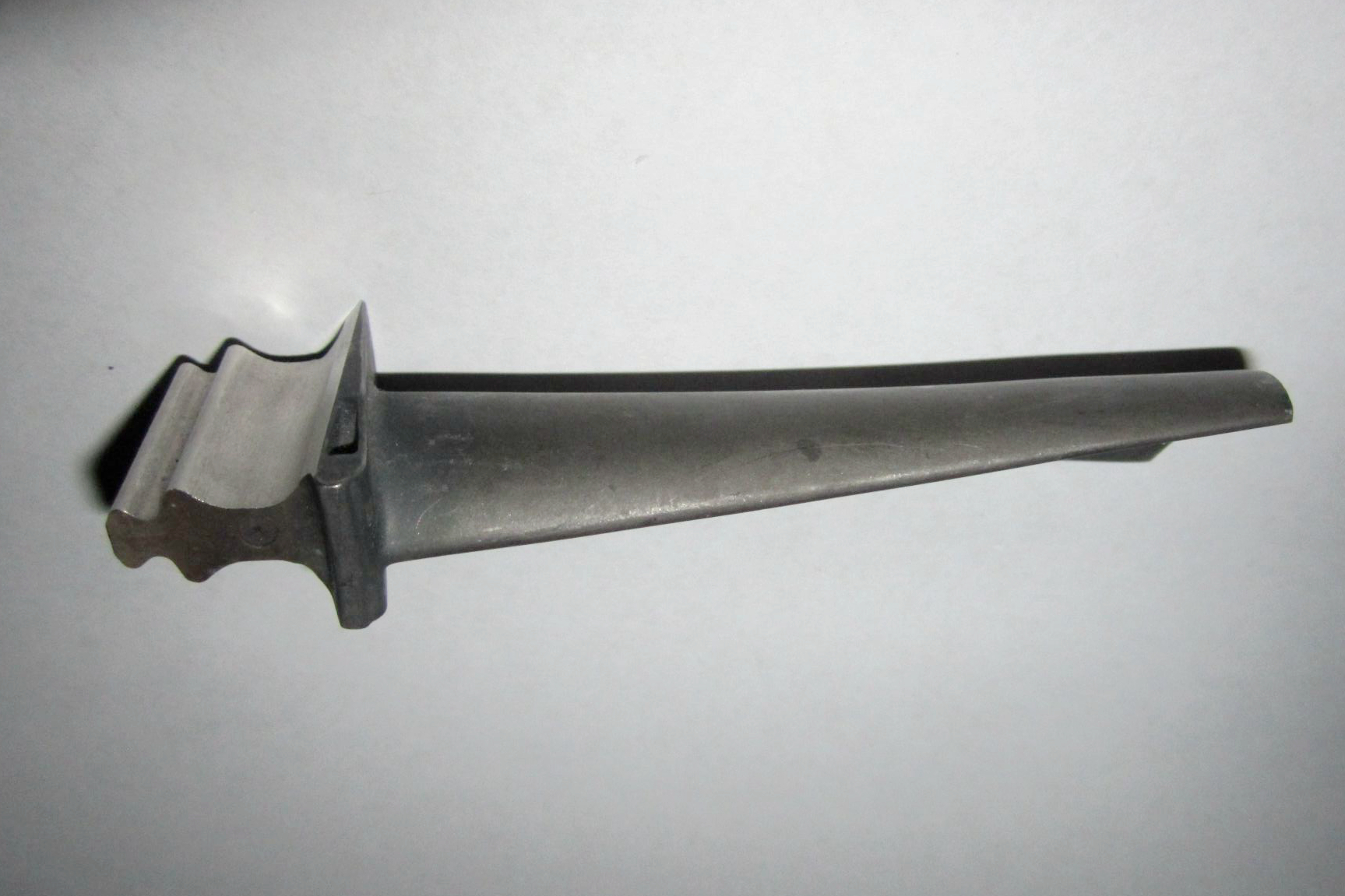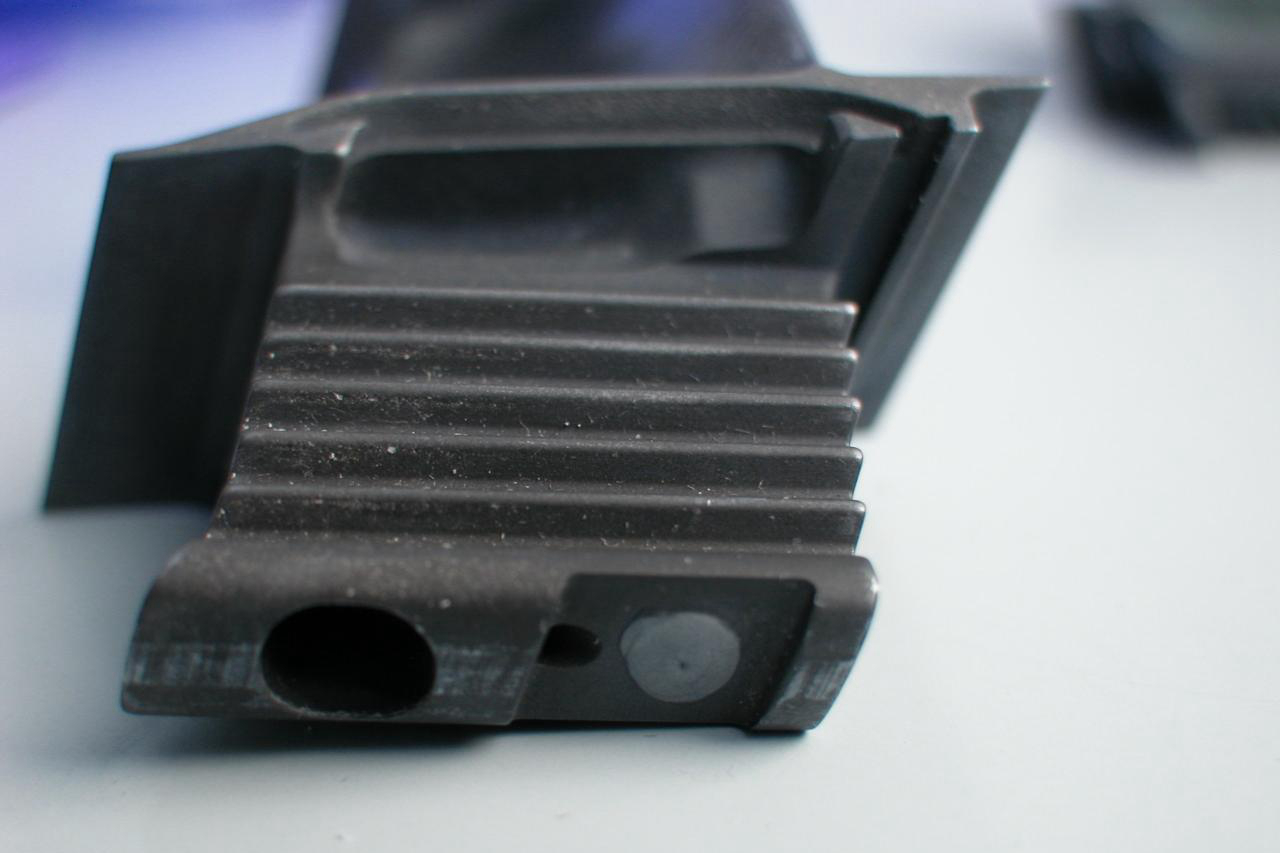Crystal Selection Technique for Single Crystal Blade Casting
Single crystal turbine blades are critical in high-performance applications such as aerospace, power generation, and defense, where extreme temperatures and mechanical stresses push materials to their limits. These blades rely on a uniform crystal structure, free from grain boundaries, to achieve optimal mechanical and thermal properties. The process of crystal selection is crucial in ensuring these components' structural integrity and performance.
The crystal selection technique eliminates the formation of grain boundaries that can weaken the blade and reduce its operational lifespan. Manufacturers can achieve the precise crystal alignment necessary for high-performance applications through advanced casting methods, including directional solidification and seed crystals. These methods ensure that turbine blades deliver exceptional reliability and durability under extreme operating conditions.

Crystal Selection in the Casting Process
Crystal selection is a critical step in casting single crystal turbine blades. It ensures the blade has a single, continuous crystal structure free from defects that could compromise its performance.
Directional solidification is the foundation of the crystal selection process. This technique involves creating a controlled temperature gradient during solidification, which guides the molten alloy to crystallize in a specific direction. As the material cools, the crystal grows uniformly from a seed, eliminating grain boundaries. Maintaining precise temperature control is critical, as even minor fluctuations can lead to the formation of unwanted grains. Applying directional solidification techniques ensures the production of high-quality, defect-free turbine components.
Seeding methods are employed to initiate crystal growth. A seed crystal is introduced at the base of the mold, acting as the starting point for the single crystal structure. This seed ensures that the crystal grows in a controlled and uniform manner throughout the casting process. However, ensuring the alignment and stability of the seed can be challenging, as any misalignment may result in secondary grains or defects. These methods are often used alongside single crystal casting to guarantee precision and uniformity in the final product.
The helical selector method is another critical aspect of the crystal selection process. This technique uses a helical channel within the mold to allow only the strongest and most uniform crystal to progress. As the molten alloy solidifies, weaker grains are eliminated by the channel's design, ensuring a high-quality single-crystal structure. The helical selector method is particularly effective in defect-free casting but requires precise engineering and process control. This is often complemented by advanced casting techniques that further enhance the quality of the crystal structure.
Innovations in cooling techniques further enhance the crystal selection process. Advanced cooling systems maintain consistent temperature gradients, minimizing the risk of rapid cooling or uneven thermal distribution. These innovations help improve the efficiency and reliability of the casting process, ensuring high-quality single-crystal blades. Superalloy CNC machining post-casting ensures precise finishing and compliance with stringent aerospace standards.
Suitable Single Crystal Casting Superalloys
The choice of superalloys is critical to the success of single-crystal blade casting. These materials must withstand extreme operating conditions, offering exceptional strength, oxidation resistance, and thermal stability.
Inconel Alloys
Inconel alloys are among the most widely used materials for single-crystal blade casting. Alloys like Inconel 738 and Inconel 713 provide excellent thermal resistance and mechanical strength, making them ideal for high-temperature applications. However, maintaining a consistent single-crystal structure during casting can be challenging, requiring precise solidification conditions and alloy composition control.
CMSX Series
The CMSX series of superalloys, including CMSX-4, CMSX-10, and CMSX-486, are designed explicitly for single-crystal applications. These alloys are known for their superior creep resistance and high-temperature performance. Advances in CMSX alloy formulations have reduced segregation and improved the quality of single crystal castings, making them a popular choice for turbine blades.
Rene Alloys
Rene alloys, such as Rene 104, Rene 88, and Rene N5, are also widely used in single crystal blade casting. These materials offer exceptional thermal fatigue and oxidation resistance, making them ideal for demanding applications. However, achieving uniform crystal structures with Rene alloys requires advanced crystal selection techniques and careful process optimization.
Specialized Single Crystal Alloys
Specialized single crystal alloys, like PWA 1484 and CMSX-2, are tailored for specific turbine applications. These alloys provide excellent thermal stability and long-term durability, making them suitable for the most demanding environments. Their use demands precise control over casting parameters and rigorous quality assurance to ensure consistent performance.
Post-Processing for Optimized Crystal Structure
Post-processing is an essential part of preparing single-crystal blades for use in high-performance applications. Each post-processing step enhances the material’s properties and ensures the integrity of the crystal structure.
Hot Isostatic Pressing (HIP)
Hot Isostatic Pressing (HIP) is a critical step in post-processing. This technique involves subjecting the blade to high pressure and temperature, eliminating internal porosity and improving the material’s density. HIP enhances the blade’s mechanical properties, including its fatigue resistance and creep strength. However, maintaining the single crystal structure during HIP requires precise pressure and temperature control to avoid introducing new defects.
Heat Treatment
Heat treatment is another vital post-processing technique. It optimizes the blade’s tensile strength, ductility, and thermal fatigue resistance by altering the microstructure. Heat treatment must be carefully tailored to each alloy, as improper thermal cycling can lead to unwanted grain recrystallization or other defects.
Surface Finishing and Coating
Surface finishing and coating processes, such as applying Thermal Barrier Coatings (TBC), protect the blade from oxidation and thermal damage. TBCs create a protective layer that reduces heat transfer, improving the component’s lifespan and reliability. Advanced application methods, such as plasma spraying, ensure the coating is uniform and does not compromise the blade’s structural integrity.
Precision Machining
Precision machining is used to achieve the final geometry and design of the blade, including the creation of intricate cooling channels. CNC machining and drilling techniques must be executed with extreme precision to maintain the structural integrity of the single crystal blade while meeting tight dimensional tolerances.
Industry Applications of Single Crystal Blades
Single crystal blades are used across various industries where high-performance components are required to operate under extreme conditions. Each industry presents unique challenges that influence the design and production of these components.
Aerospace and Aviation
In aerospace and aviation, single-crystal blades are critical components of jet engines. They optimize airflow, enhance efficiency, and improve resistance to thermal fatigue. Crystal selection techniques ensure that these blades meet the stringent standards required for aerospace and aviation applications, where safety and performance are paramount.
Power Generation
In power generation, single crystal blades are used in gas and steam turbines to maximize energy output and minimize emissions. These applications' high temperatures and mechanical stresses demand exceptional strength and durability blades. Power generation facilities rely on these advanced components to maintain operational efficiency and reduce maintenance costs.
Oil and Gas
The oil and gas industry relies on single crystal blades for compressors and turbines used in harsh environments. Precise crystal selection ensures these components can withstand the extreme pressures and temperatures encountered in drilling and extraction operations. Oil and gas applications benefit significantly from these blades' high reliability and durability.
Defense and Military
In defense and military applications, single-crystal blades are used in advanced propulsion systems and other critical technologies. Military and defense sectors depend on these components for reliable performance under the extreme conditions associated with defense systems, ensuring mission-critical systems maintain their integrity.
FAQs
What is the role of directional solidification in the crystal selection process?
How do CMSX and Rene alloys enhance the performance of single-crystal blades?
Why is the helical selector method critical in achieving defect-free crystal structures?
What are the key challenges in maintaining a single crystal structure during post-processing?
How does testing ensure the quality and reliability of single-crystal turbine blades?




